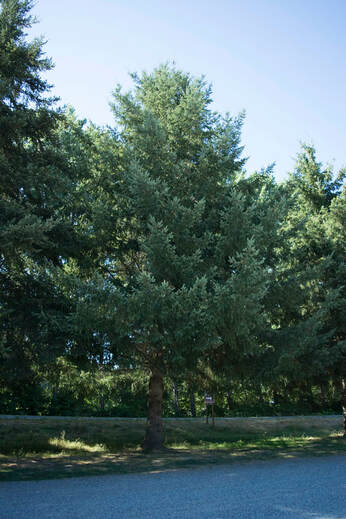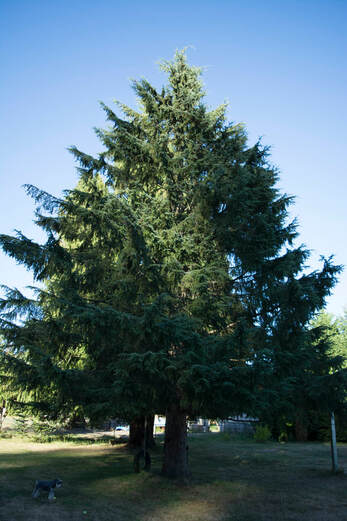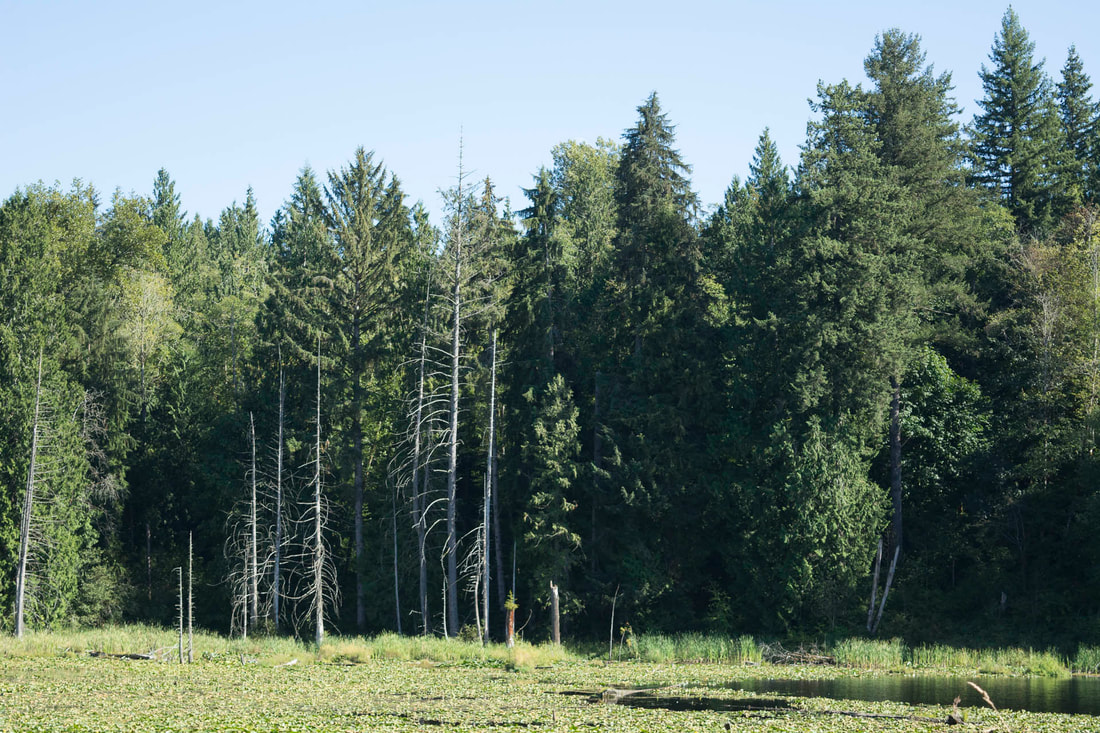|
Washington State is home to some of the world’s largest trees, by both height and width. Find descriptions of the most common trees to the Puget Sound area below. To learn more about selling your tree for money, see this article here. Douglas Fir The Doug fir can be easy to confuse with other Christmas trees like Western hemlock and Sitka spruce. The surefire way to distinguish it is to look at the cone, which has a three-pronged bract emerging between the scales. The Doug fir can be easy to confuse with other Christmas trees like Western hemlock and Sitka spruce. The surefire way to distinguish it is to look at the cone, which has a three-pronged bract emerging between the scales. This is perhaps the most common tree in our area. It is popular for both deforestation and reforestation for its ability to grow fast and in tremendous volume. Note that the Doug fir has been misnamed; it is technically of the genus pinus --- in layman’s terms, its a species of pine tree. This behemoth can grow up to 330’ tall and 8’ in diameter. In small specimen, it has a picturesque Christmas tree look like other conifers. In larger specimen, it might lose its lower branches if they don’t have access to sunlight (ie, if it grows in proximity to other trees). This makes the lower portion of the tree a prime, branch free, lumber log that can stretch well past a 100’ in length. Commercial uses: The strength of this wood makes it popular for structural applications like framing, meaning it is good stock for dimensional lumber. Western Hemlock The Western Hemlock can be confused with other common conifers, especially the Douglas fir. The bark, needles and crown shape are similar (though they can be distinguished with a trained eye), so the best way to ID a hemlock is by the cone. They lack the three-pronged bract that defines that Douglas, and are much smaller. The Western Hemlock can be confused with other common conifers, especially the Douglas fir. The bark, needles and crown shape are similar (though they can be distinguished with a trained eye), so the best way to ID a hemlock is by the cone. They lack the three-pronged bract that defines that Douglas, and are much smaller. Another common conifer that takes on the Christmas tree character. This is also the Washington State tree, and can be hard to distinguish from the Douglas fir. It is known for having droopier branches, but this trait can be seen less commonly in the Douglas, too, so its not the best way to ID a hemlock. First hand observation shows that the Western hemlock is less common than the Douglas fir in the Snohomish area. The tree is also a little smaller, growing up to 230’ tall but slightly wider at 9’ in diameter. Uses: Prime Western hemlock logs can be used for veneer wood, structural lumber, and paper. For more info on selling your logs, see this article. Western Red Cedar The bark of the Western Red cedar is fibrous and grows in long vertical strips that shed overtime. The best way to ID this tree with certainty is to look at the boughs and needles. They have a flat appearance, with all the needles on one bough growing on the same plane. This gives the impression of a giant leaf. The needles themselves also have a waxy appearance. They are white-green on the underside. The bark of the Western Red cedar is fibrous and grows in long vertical strips that shed overtime. The best way to ID this tree with certainty is to look at the boughs and needles. They have a flat appearance, with all the needles on one bough growing on the same plane. This gives the impression of a giant leaf. The needles themselves also have a waxy appearance. They are white-green on the underside. Another evergreen conifer that is seen everywhere around Snohomish and all over Western Washington. Like the Douglas fir, this tree is misnamed. The Western Red actually belongs to the genus thuja of the cypress family. These monsters can grow up to 230’ tall and 13’ in diameter. Uses: The Western Red cedar is known for its straight grain, which makes it easy to split. Combine that with a tendency to burn hot and fast and you have ideal kindling wood. In commercial applications, cedar is used where resistance to rot is prioritized over structural strength (think fence boards and shingles). Sitka SpruceThe Sitka is the largest of all spruce trees, and one of the largest of all conifers in the world --- up to330’ tall and 16’ in diameter. Another Christmas tree, the Sitka is a little easier to distinguish at a glance, because of the bluish tinge of its needles. To ID the Sitka with confidence, you can just give a bough a gentle squeeze. The needles are rigid and sharp like a porcupine quill and will be slightly uncomfortable to squeeze. Its bark also usually separates it from the Douglas fir and Western hemlock, being more similar to the bark of a Lodgepole pine or Ponderosa pine. Finally, the cone is a dead giveaway, as its long, slender, cylindrical shape distinguishes it from all of the above mention trees. Uses: the Sitka is sought for its uncommonly high strength-to-weight ratio, which makes it useful for making things like doors, ladders, pallets, furniture, trim, and musical instruments. For more info on how to get money for your tree, see this article. Bigleaf Maple Maples are easy to ID by the shape of their leaves, which is made famous by the Canadian flag. Though there are other maple species here in Western Washington (notably the Douglas maple),they are easy to distinguish because they don’t grow to the same size --- nor do their leaves. Any maple leaf exceeding 4” is sure to come from a Bigleaf. Maples are easy to ID by the shape of their leaves, which is made famous by the Canadian flag. Though there are other maple species here in Western Washington (notably the Douglas maple),they are easy to distinguish because they don’t grow to the same size --- nor do their leaves. Any maple leaf exceeding 4” is sure to come from a Bigleaf. This deciduous tree can grow up to 160’ tall. Seen all over the Snohomish area, it appears to be the most common deciduous around, excepting perhaps the all-pervasive cottonwood. Uses: As a common hardwood, the Bigleaf maple is sought for applications like veneer, furniture, and musical instruments. For more info on how you can sell such a tree for money, you can see this article here. Red Alder What distinguishes the Paper birch is that its bark is a brighter color, and tends to peel in paper-like sheafs, which is where the tree gets its name. The dead giveaway for the Red alder is the vivid red flesh underneath the bark that shows through when bark is scratched or bruised. Predictably, this is how the Red alder gets its name. What distinguishes the Paper birch is that its bark is a brighter color, and tends to peel in paper-like sheafs, which is where the tree gets its name. The dead giveaway for the Red alder is the vivid red flesh underneath the bark that shows through when bark is scratched or bruised. Predictably, this is how the Red alder gets its name. This deciduous grows up to 98’ tall. The bark is gray, ashy, and mottled. The biggest trap to watch out for when trying to ID this tree is confusing it with Paper birch, whose leaves and bark have a similar appearance. What distinguishes the Paper birch is that its bark is a brighter color, and tends to peel in paper-like sheafs, which is where the tree gets its name. The dead giveaway for the Red alder is the vivid red flesh underneath the bark that shows through when bark is scratched or bruised. Predictably, this is how the Red alder gets its name. Uses: Red alder is known for being soft compared to other hardwoods. This means it is less durable, but far more workable. Red alder also tends to be a more economical option among hardwoods. It is used for furniture and cabinets. We will be adding more trees to our Western Washington Common Tree ID guide in the coming weeks. You can also check out the Tree Library for a complete collection.
|
SNOHOMISH TREE COMPANYFollow our blog for industry insights, company updates, and tips for working with trees. Archives
February 2022
Categories |


 RSS Feed
RSS Feed
